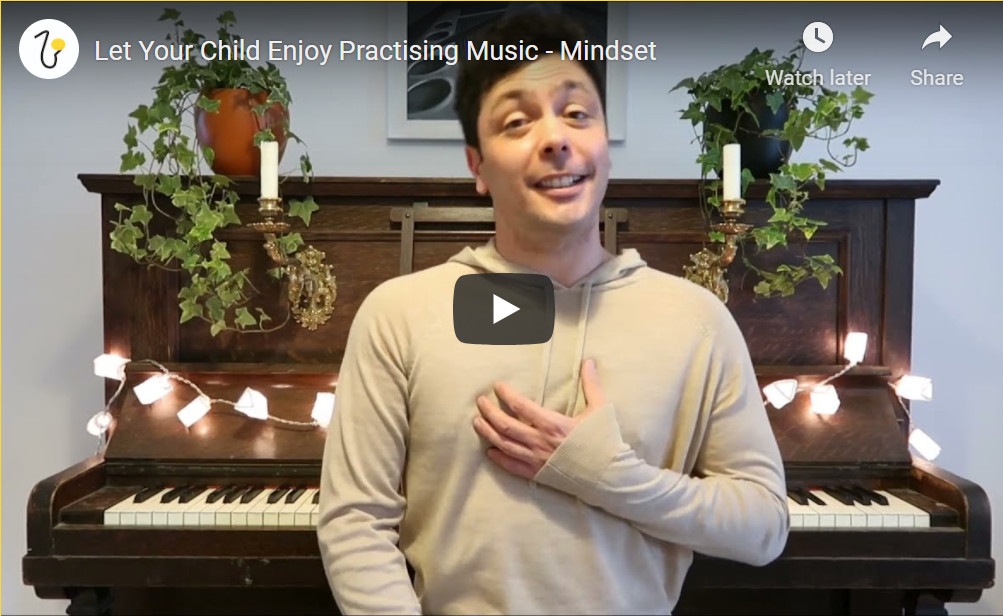Welcome to this new tutorial series on how to help your child practise music more effectively without the need for musical knowledge or experience. Today's short video is on the subject of helping your child to enjoy practising their instrument. Help your child to develop a positive 'can-do' attitude while holding their instrument, and find their path to a 'musician's mindset.'
Introduction
It's a pretty simple equation! Children who enjoy practising want to do it, and the more they want to practise, the better they get! The key thing to remember is that just like performing, practsing music should be play, not work.
Of course, there has to be an element of practising that focuses on improving technique, but overfocussing on this can make practising a negative experience for a child. Even if you don't have musical knowledge yourself, there are many ways to help support your child's practise that help foster a sense of fun and excitement that stems from positive learning outcomes from both 'correct' and 'incorrect' responses in practise.
Musician's Mindset
Developing a musician's mindset is key to helping your child enjoy practise. Try to remove concepts of 'success' or 'failure' and reinforce the idea 'just playing' is the most important element of practising the instrument. This doesn't mean that practise should be unfocussed or lacking in objectives, just that the process and mindset of trying to improve should be the focus rather than the 'outcome.'
Practise with your child! Lead by example, and show them that your inevitable mistakes are part of a fun and exciting journey of discovery. Get involved, join in and don't be afraid to get silly! Developing a stronger emotional connection to playing music through these kind of experiences is a vital part of getting your child to want to practise.
Learn by Doing
Playing and intrument is primarily a practical activity, but in order to achieve a high level of practical understanding, a great deal of mental study and conceptual learning is also required. Before practising a phrase or section with your child, make sure that they understand all of the concepts and ideas they need for the phrase. Talk it through, make sure all the concepts are clear. THEN PLAY! While playing the instrument whether right or wrong, children should just enjoy the process of holding and playing the instrument, rather than being distracted by the intellectual side.
This separates intellectual and practical understanding, and helps to remove self-doubt and worry from the practise process. Every time your child plays their instrument, you want them to be feeling happy, confident and creative rather than over-concentrating, lost in thought or worrying about success or failure. Practising the 'right' emotions is key to fostering a desire to practise. KEEP PRACTISE PRACTICAL!
Practise Feelings as well as the Instrument
Following on from the above, the main aim of practising is to improve, which can happen directly or indirectly. When we practise we are basically establishing habits - patterns of movement or behaviour that become familiar over time. Don't forget how you feel when you practise also becomes internalised and habitualised, so it's vital for your child to practise with a sense of excitement, happiness and self-expression, and avoid feelings of boredom and resentment.
Be in the Moment
Avoid overfocussing and negative emotions while practising and just play! Help your child to imagine being a great musician, play at it and visualise performing. Help them to be in the moment and enjoy the experience of playing their instrument so that each practise session becomes a performance filled with excitement!
Round Up
If you've enjoyed this tutorial please Subscribe to the Sax Teacher UK Channel. See you soon!
